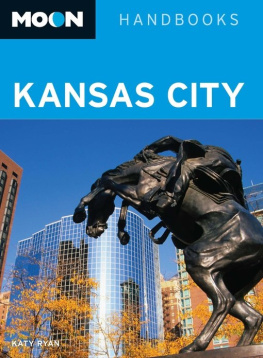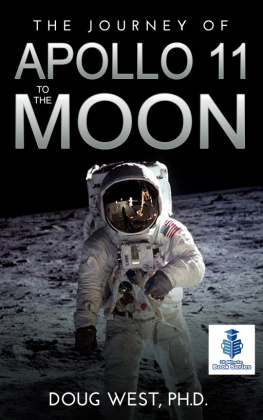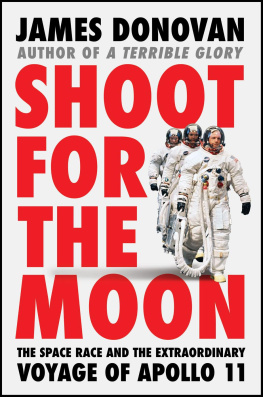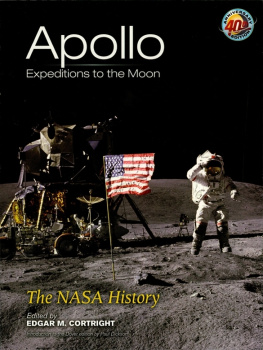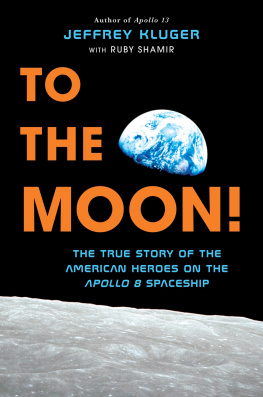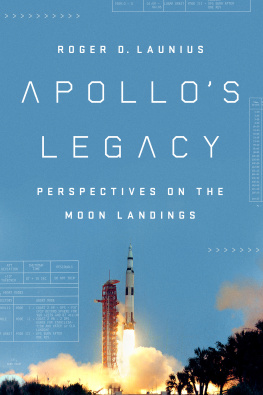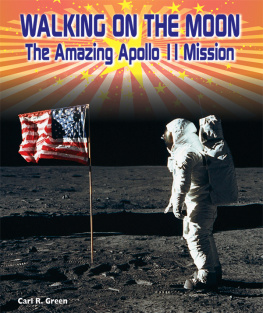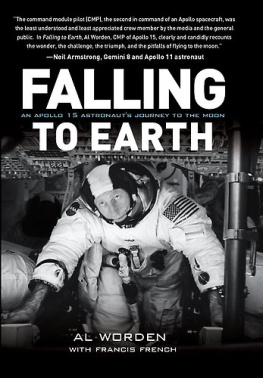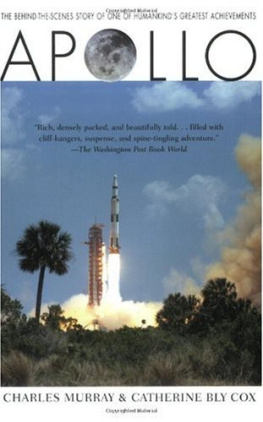Ryan S. Walters - Apollo I: The Tragedy That Put Us on the Moon
Here you can read online Ryan S. Walters - Apollo I: The Tragedy That Put Us on the Moon full text of the book (entire story) in english for free. Download pdf and epub, get meaning, cover and reviews about this ebook. year: 2021, publisher: Regnery History, genre: Non-fiction. Description of the work, (preface) as well as reviews are available. Best literature library LitArk.com created for fans of good reading and offers a wide selection of genres:
Romance novel
Science fiction
Adventure
Detective
Science
History
Home and family
Prose
Art
Politics
Computer
Non-fiction
Religion
Business
Children
Humor
Choose a favorite category and find really read worthwhile books. Enjoy immersion in the world of imagination, feel the emotions of the characters or learn something new for yourself, make an fascinating discovery.

- Book:Apollo I: The Tragedy That Put Us on the Moon
- Author:
- Publisher:Regnery History
- Genre:
- Year:2021
- Rating:5 / 5
- Favourites:Add to favourites
- Your mark:
- 100
- 1
- 2
- 3
- 4
- 5
Apollo I: The Tragedy That Put Us on the Moon: summary, description and annotation
We offer to read an annotation, description, summary or preface (depends on what the author of the book "Apollo I: The Tragedy That Put Us on the Moon" wrote himself). If you haven't found the necessary information about the book — write in the comments, we will try to find it.
Apollo I: The Tragedy That Put Us on the Moon — read online for free the complete book (whole text) full work
Below is the text of the book, divided by pages. System saving the place of the last page read, allows you to conveniently read the book "Apollo I: The Tragedy That Put Us on the Moon" online for free, without having to search again every time where you left off. Put a bookmark, and you can go to the page where you finished reading at any time.
Font size:
Interval:
Bookmark:
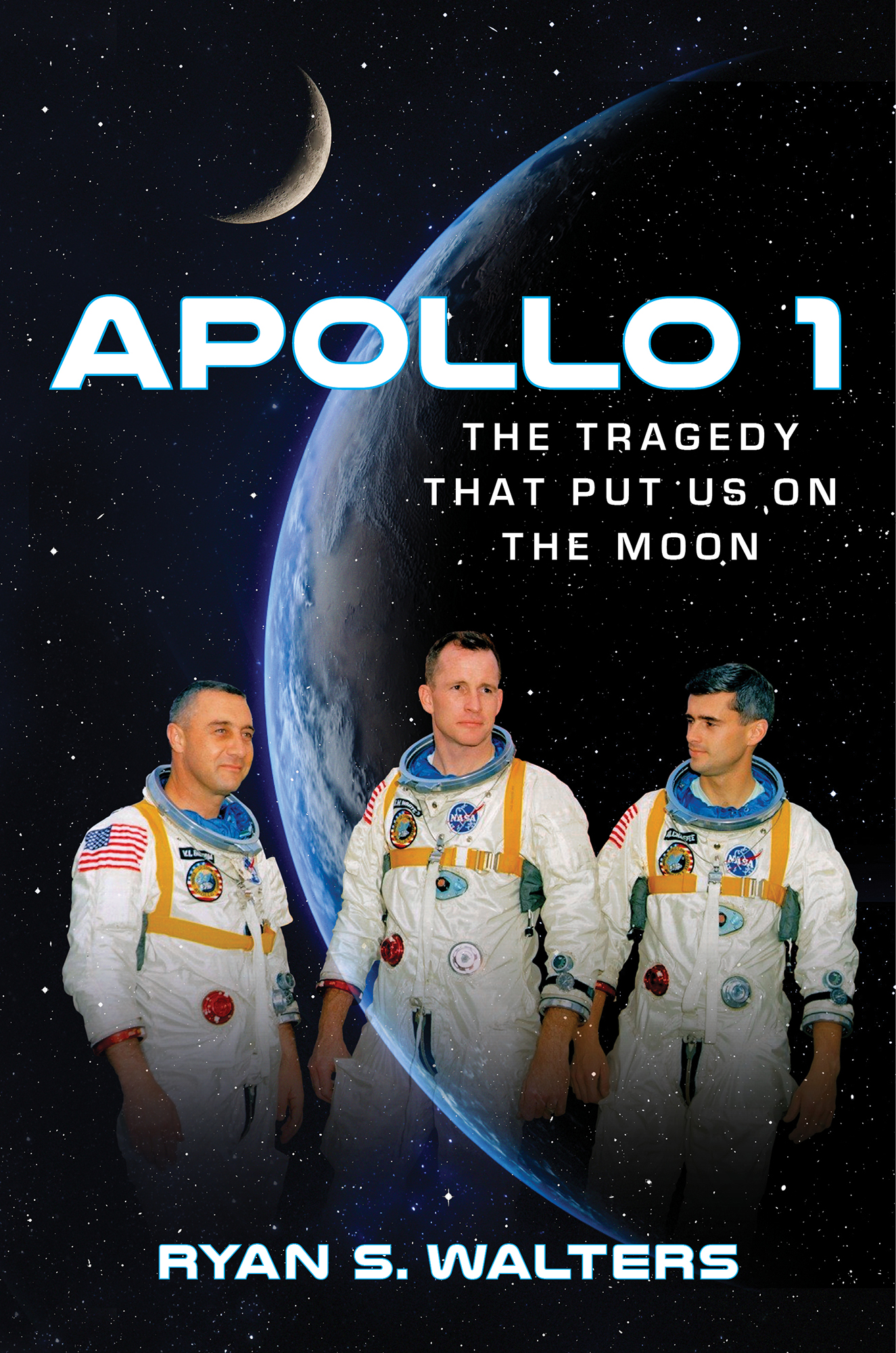
Apollo 1
The Tragedy That Put Us on the Moon
Ryan S. Walters

Copyright 2021 by Ryan S. Walters
All rights reserved. No part of this publication may be reproduced or transmitted in any form or by any means electronic or mechanical, including photocopy, recording, or any information storage and retrieval system now known or to be invented, without permission in writing from the publisher, except by a reviewer who wishes to quote brief passages in connection with a review written for inclusion in a magazine, newspaper, website, or broadcast.
Regnery History is a trademark of Salem Communications Holding Corporation
Regnery is a registered trademark of Salem Communications Holding Corporation
ISBN: 978-1-68451-094-8
eISBN: 978-1-68451-147-1
Library of Congress Control Number: 2021953048
Published in the United States by
Regnery History
An imprint of Regnery Publishing
A division of Salem Media Group
Washington, D.C.
www.RegneryHistory.com
Books are available in quantity for promotional or premium use. For information on discounts and terms, please visit our website: www.RegneryHistory.com.
Cover design by John Caruso
Astronauts photo courtesy of NASA
To the families of Gus Grissom, Ed White, and Roger Chaffee: You made the ultimate sacrifice to put America on the moon. A grateful nation will forever be in your debt.
Ad astra per aspera.
A rough road leads to the stars.
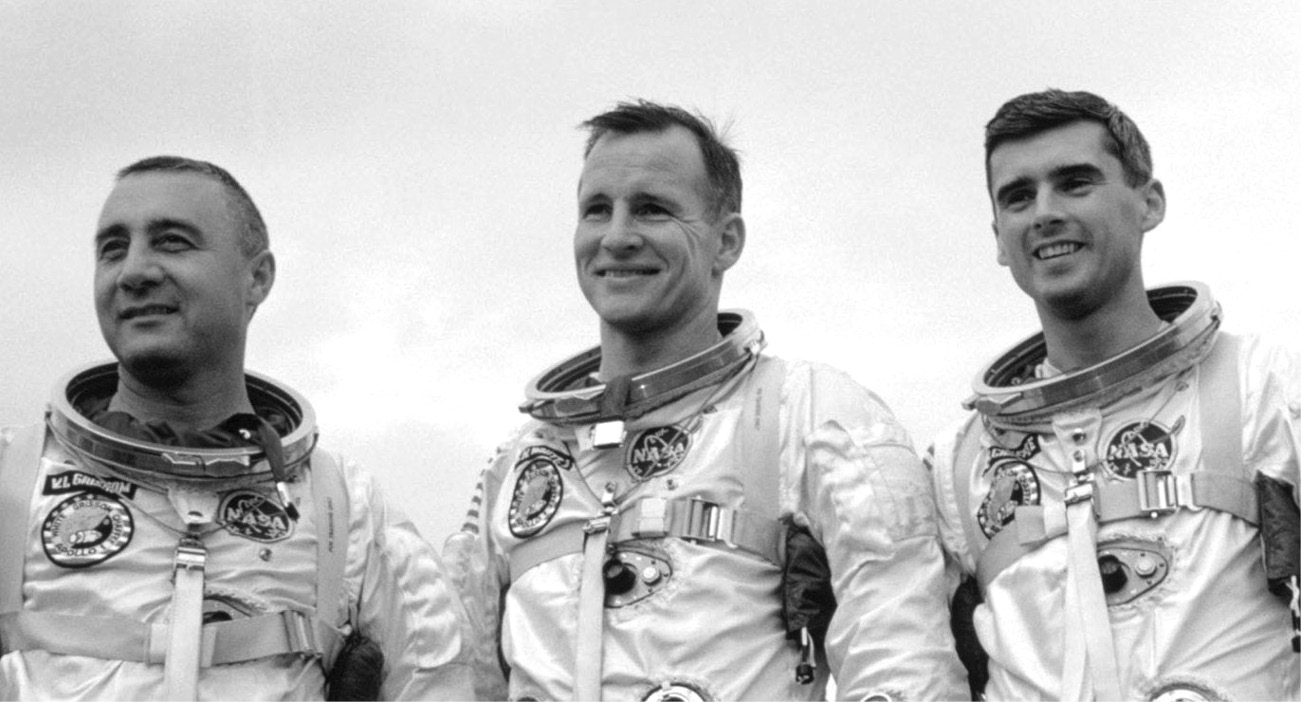
Theres always a possibility that you can have a catastrophic failure, of course; this can happen on any flight; it can happen on the last one as well as the first one. So, you just plan as best you can to take care of all these eventualities, and you get a well-trained crew, and you go fly.
Gus Grissom
People might look at our work as being perhaps dangerous, or risky of sorts, but I think we train in it and work in it so much and understand it well enough that we dont look at it from this viewpoint. We accept the risks.
Ed White
Theres a lot of unknowns and a lot of problems that could develop or might develop and theyll have to be solved. And thats what were there for. This is our business to find out if this thing will work for us.
Roger Chaffee
Clinton Anderson U.S. senator from New Mexico; chaired Senate Space Committee hearings
Bobby Baker Powerful protg of Lyndon Johnson and secretary for the Senate majority; known as the 101st Senator
Fred Black Washington lobbyist for North American Aviation
Frank Borman Astronaut, Gemini 7; member of Apollo 204 Review Board; commanded Apollo 8, the first flight to the moon
Martha Chaffee Wife of Roger Chaffee
Roger Chaffee Astronaut, Apollo 1 pilot
Walter Cunningham Astronaut, Apollo 1 backup crew, Apollo 7 pilot
Kurt Debus Head of the Kennedy Space Center at Cape Canaveral
Donn Eisele Astronaut, Apollo 1 backup crew; originally on the Apollo 1 prime crew; senior pilot on Apollo 7
Robert Gilruth Head of the Space Task Group; director of the Manned Spacecraft Center in Houston
Betty Grissom Wife of Gus Grissom
Gus Grissom Astronaut, Apollo 1 commander; Mercury 4 and Gemini 3
Lyndon B. Johnson 36th president of the United States; in office at the time of the fire
John F. Kennedy 35th president of the United States; assassinated on November 22, 1963
Robert Kerr U.S. senator from Oklahoma and millionaire oil man; helped North American Aviation receive the contract to build the Apollo spacecraft
Chris Kraft NASA flight director; director of flight operations in Houston
Walter Mondale U.S. senator from Minnesota; criticized NASA during the Senate hearings in 1967
Lola Morrow Secretary to the astronauts
George Mueller Associate administrator for Manned Space Flight
Rocco Petrone Director of Launch Operations at the Kennedy Space Center
Sam Phillips Air Force general; head of the Apollo Program in Washington, D.C.
Wally Schirra Astronaut, Apollo 1 backup crew; Mercury 8, Gemini 6, Apollo 7
Robert Seamans Deputy administrator of NASA
Joe Shea Head of the Apollo Spacecraft Program in Houston
Deke Slayton Original Mercury astronaut; director of Flight Crew Operations in Houston
Tom Stafford Astronaut, Apollo 1 support crew; Gemini 6, Gemini 9A, Apollo 10, Apollo-Soyuz Test Project
Harrison Stormy Storms Headed the Space Division at North American Aviation
Olin Teague Texas congressman; chaired House Space Committee hearings
James Webb Administrator of NASA; appointed by Kennedy, served under Johnson until 1968
Ed White Astronaut, Apollo 1 senior pilot; Gemini 4 pilot, the first American to walk in space
Pat White Wife of Ed White
John Young Astronaut, Apollo 1 support crew; pilot on Gemini 3 with Gus Grissom; command module pilot on Apollo 10 and commander of Apollo 16, the ninth person to walk on the moon
O n January 27, 1967, astronauts Gus Grissom, Ed White, and Roger Chaffee climbed into a new spacecraft perched atop a large Saturn rocket at the Kennedy Space Center. They were in Florida for a routine dress rehearsal of their upcoming launch into orbit, then less than a month away. Their mission, set for February, would inaugurate the new Apollo program.
All three astronauts were experienced pilots with dreams of one day walking on the moon. Little did they know that once they entered the spacecraft that cold winter day, they would never leave it alive. The mission meant to herald the dawn of the Apollo program would lead it to near failure before it ever got off the ground.
Project Apollo had one goal: land a man on the moon and return him safely to the earthsomething mankind had often dreamed of but had never achieved. The moon has captured mans imagination for millennia as an object of fascination, wonder, and scientific study. To some it is a deity to be worshipped; to others, the inspiration for a lovers serenade; and for a chosen few in the 1960s, it was a military objective in a worldwide battle for global supremacy.
A century before the great moon race, the moon captured the full attention of French novelist Jules Verne, a man with a vision that was truly ahead of his time. The moon, by her comparative proximity, and the constantly varying appearances produced by her several phases, has always occupied a considerable share of the attention of the inhabitants of the earth, he wrote in his epic novel From the Earth to the Moon.
The year was 1865. While America was ending four years of bloody conflict, Verne was dreaming of men from earth peacefully traveling to the moon, nearly a century before such a journey became the center of the Cold War world. Verne prophetically envisioned that Americans, not Europeans, would achieve such an astonishing feat. As for the Yankees, they had no other ambition than to take possession of this new continent of the sky, and plant upon the summit of its highest elevation the star-spangled banner of the United States of America, he wrote. They would do so, he imagined, using a cannonball-type of spacecraft, fired from an enormous space gun named
Font size:
Interval:
Bookmark:
Similar books «Apollo I: The Tragedy That Put Us on the Moon»
Look at similar books to Apollo I: The Tragedy That Put Us on the Moon. We have selected literature similar in name and meaning in the hope of providing readers with more options to find new, interesting, not yet read works.
Discussion, reviews of the book Apollo I: The Tragedy That Put Us on the Moon and just readers' own opinions. Leave your comments, write what you think about the work, its meaning or the main characters. Specify what exactly you liked and what you didn't like, and why you think so.

